Our Blog - Lombardy 2025 - Vicenza, Italy
After a walk in the countryside for Lucy, we headed to Vicenza with a couple stops along the way. The first stop was at the Villa Valmarana ai Nani, a villa up in the hills above Vicenza. The name "Valmarana" comes from the owners of the villa, and "ai Nani" comes from a set of 17 stone dwarfs that are on the wall surrounding the estate (you will see a couple of them). The original building dates from 1670 and it was sold to the Valmarana family in 1720, and the family continues to own the complex and live here.
There are 2 buildings here: the main house for the father and the "guest house" for the son. Both are highly frescoed, done in 1757 by the father-and-son artists, Giovanni Bambattista and Giovanni Domenico Tiepolo. The main house has frescoes that features classical and mythological themes. Several rooms are based on epic poems: Jerusalem Delivered, an Italian heroic poem written in 1575 that is set in Jerusalem during the First Crusade, and Aeneid, a Latin epic poem written in the 1st century BC. It tells the story of a Trojan hero named Aeneas (who was the son of the goddess Venus) who managed to escape after the fall of the city of Troy. I don't know these stories, so the frescoes are just nice to look at.
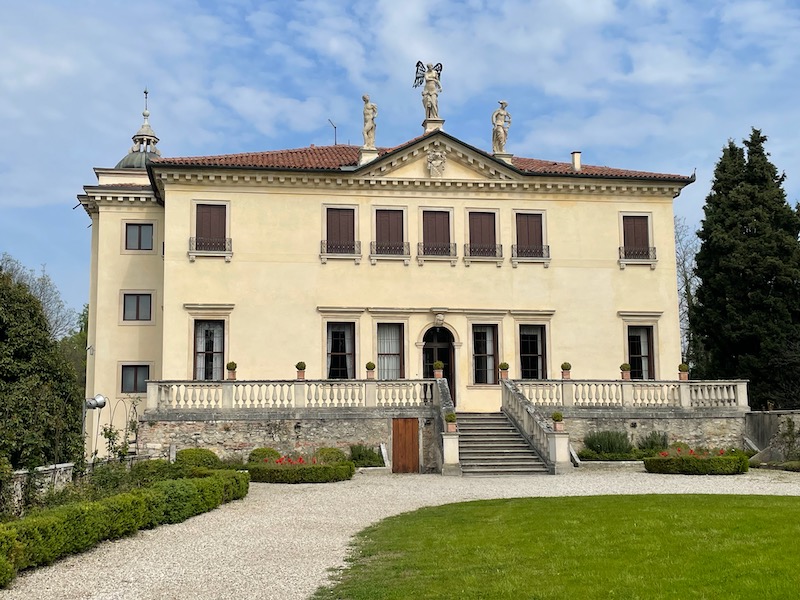

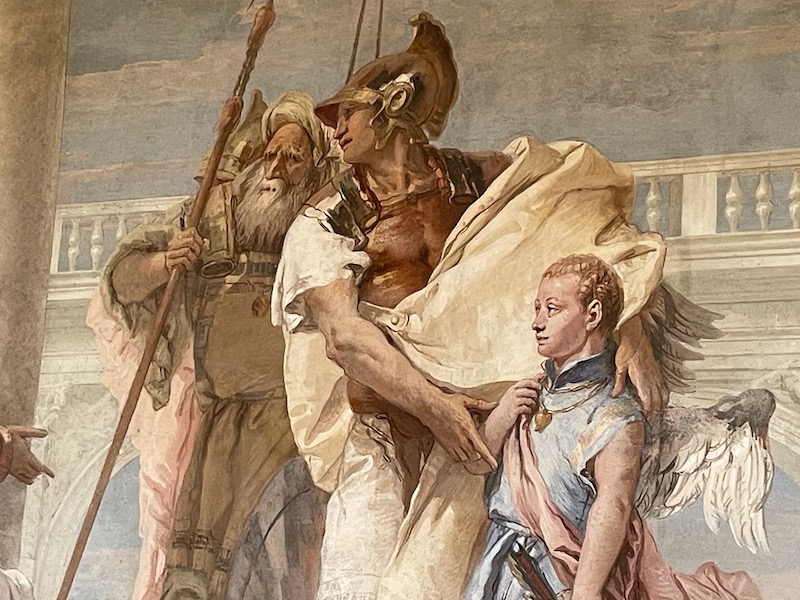
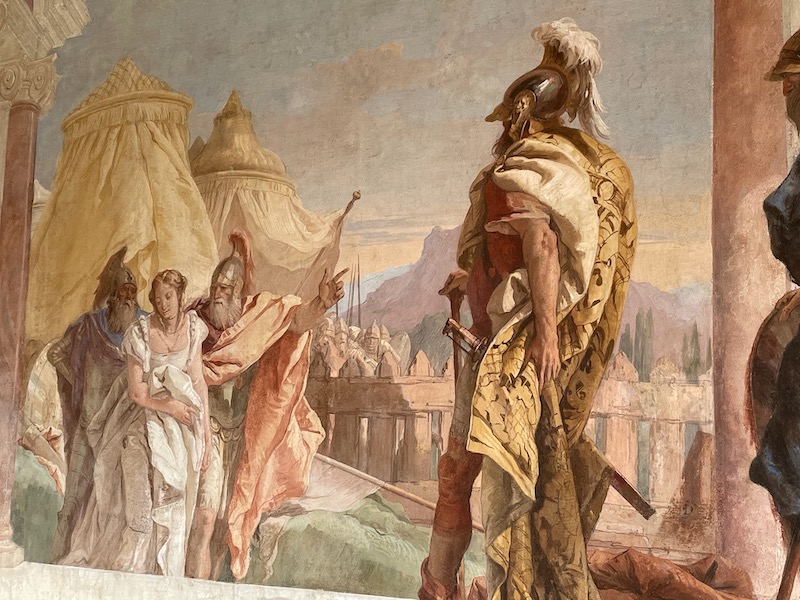
The guesthouse has a more modern style than the villa itself, with references to the Enlightenment and scenes of daily life, from the representation of the Venetian countryside, to those of the nobility, up to that of distant China. The painted ceilings are more rustic (and lovely) although I'm not sure they fit in well with the painted walls and glass chandeliers.


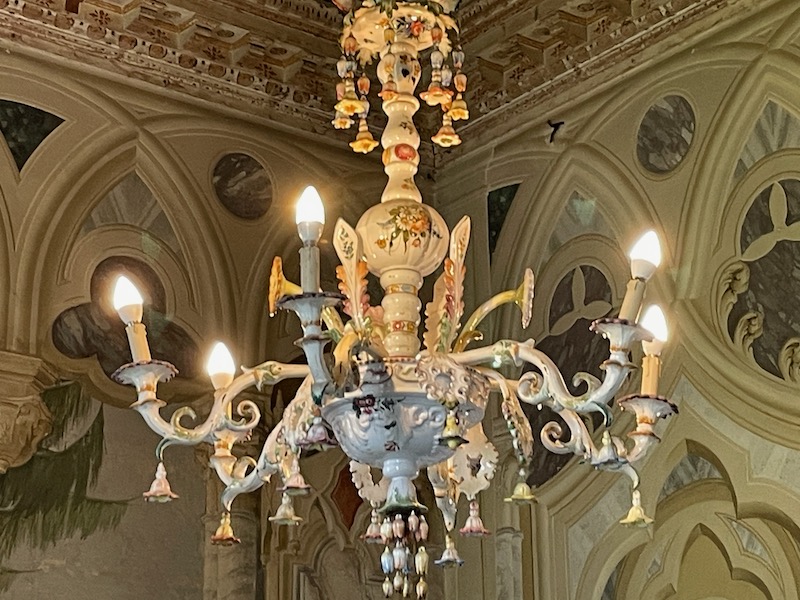

In the Hall of Chinoiserie are scenes from China of the period, which was a popular topic for paintings.

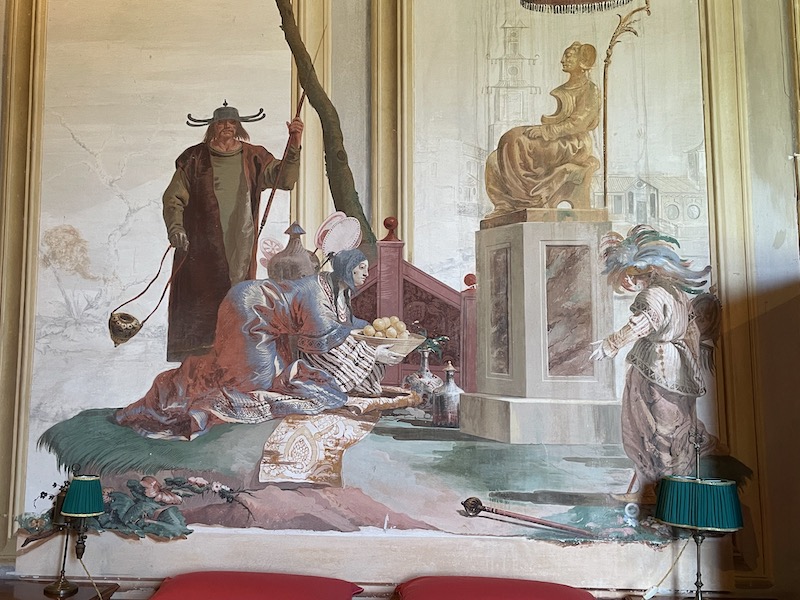
And now, the dwarfs ... a legend says that the daughter of the lord of the villa was affected by dwarfism, and that all of the servants also had to be dwarves, so that she was not made aware of her physical defect. One day, she saw a tall, handsome prince enter the villa and, now understanding that she was a dwarf, committed suicide. All of the servants were so sad that they became petrified, allowing them to watch over the eternal sleep of the daughter.
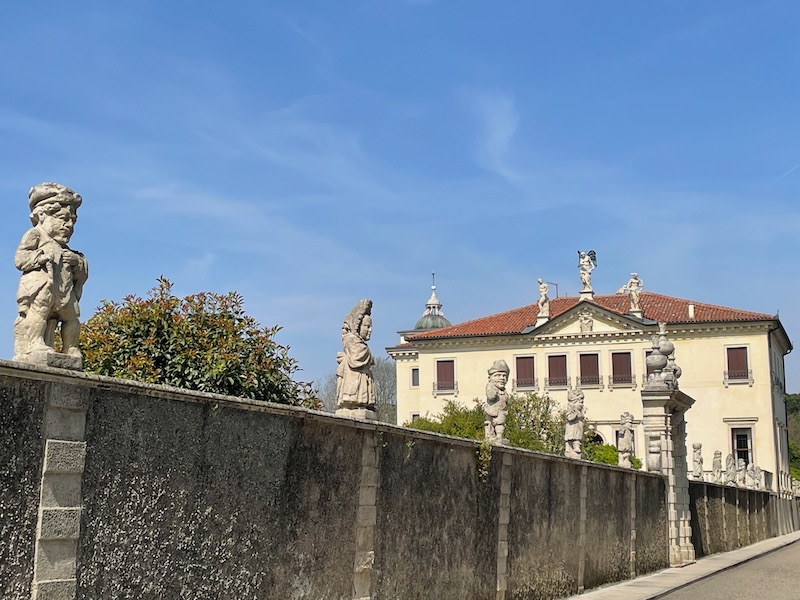

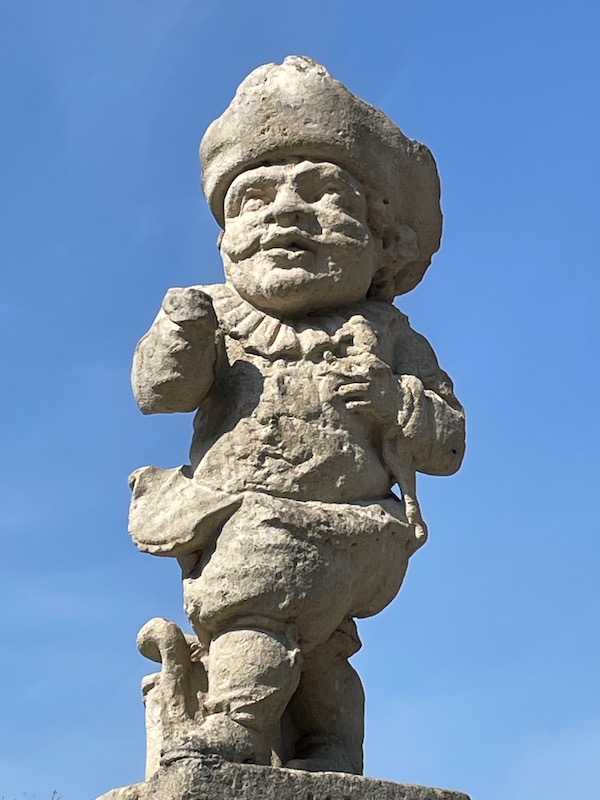
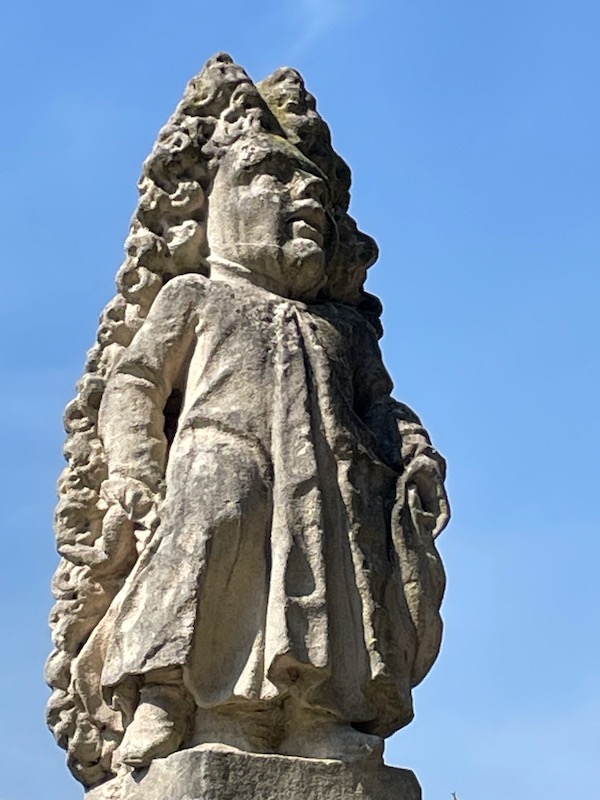
We then stopped at Monte Berico for lunch and a peek at a church. Here you can see the city of Vicenza down below.
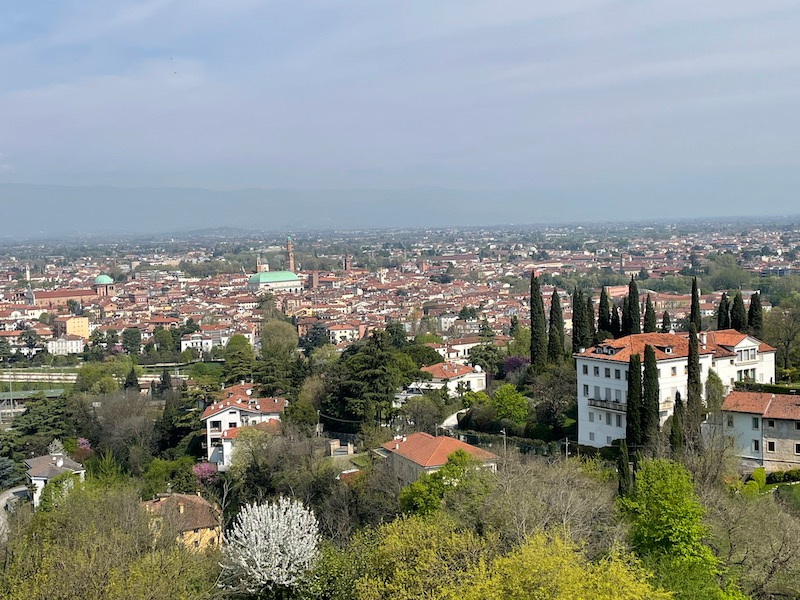
At the top of the hill is the Sanctuary of the Madonna of Monte Berico, a church that dates partly from the 15th century and partly from the 17th century. The church was built after (legend says) Madonna appeared to a peasant woman in 1426 and again in 1428, years devastated by serious plagues. In these appearances, she is said to have asked for a church built dedicated to her. When a small chapel was built, the plagued stopped.

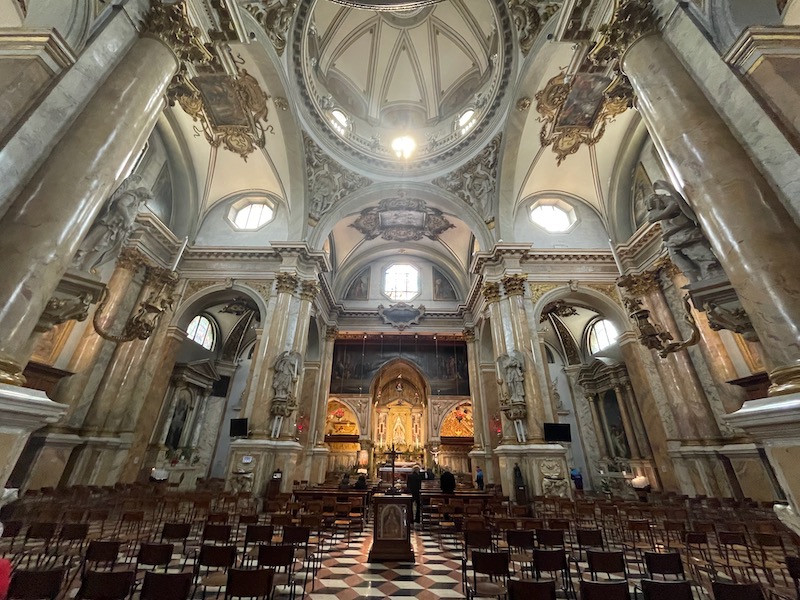

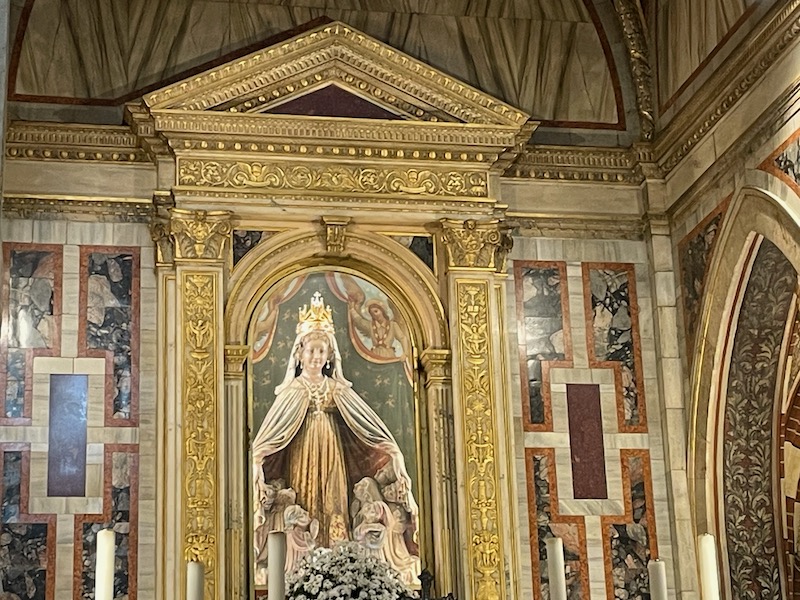
We then headed back down the hill to the city of Vicenza, with a population of over 110,000 people (so fairly large for this trip). The city dates back to the middle of the 1st century BC with the forming of a Roman town. It is known for having lots of grand mansions designed and built by Andrea Palladio, who has the Palladian architectural style named for him. You'll see a common theme running through these ... that of ancient Roman temples.
The Teatro Olimpico was begun in 1580 as Palladio's last project and was actually completed by his pupil Vincenzo Scamozzi after his death. The outside isn't that impressive really .. but Tom and Lucy got to talk to a lady out front anyway.
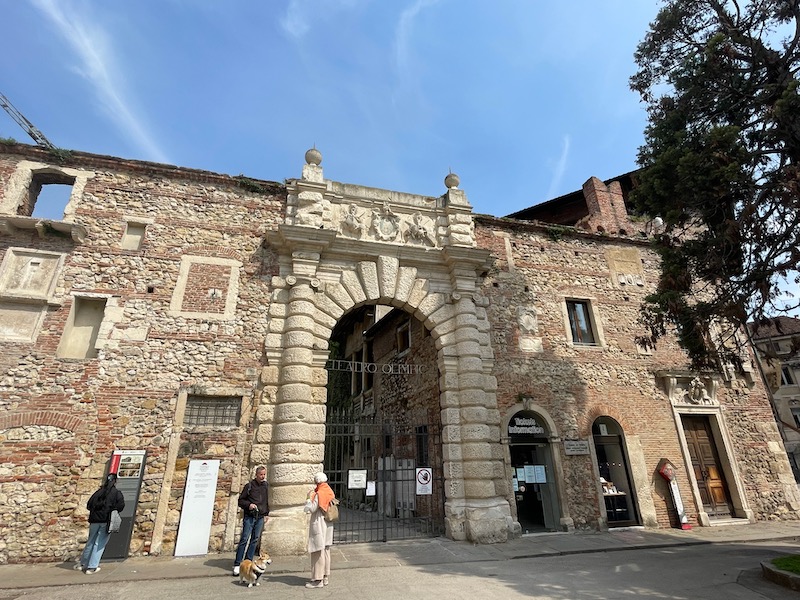
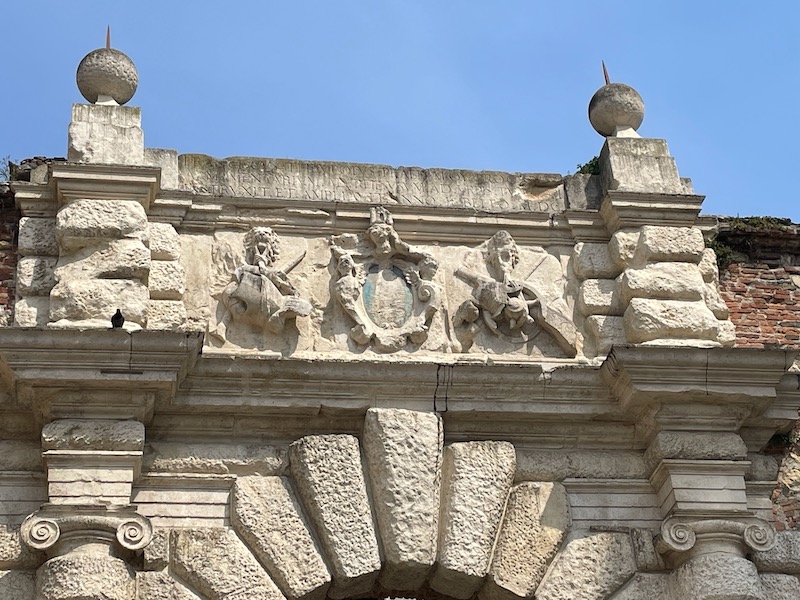
The design is that of a ancient Roman theater with a large main wall decorated with statues and other decoration. It was inaugurated in 1585 with the performance of Sophocles' play, Oedipus Rex. The sets, created specifically for that performance, depict the 7 streets of the city of Thebes and uses a specific technique to make the space appear much longer than it actually is (a few meters). The first part actually goes back, to about where the smaller arches are seen, which then is just a painted wall. This is the first time I've seen this type of technique in person.


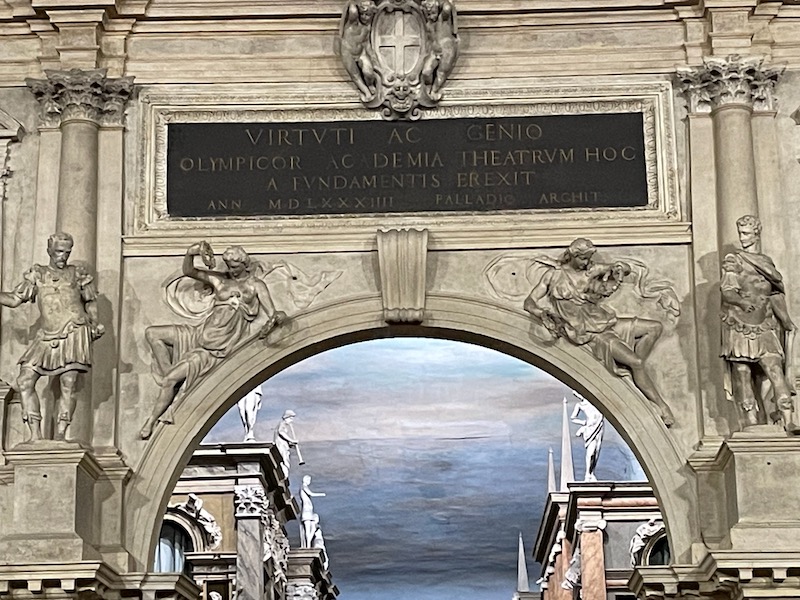
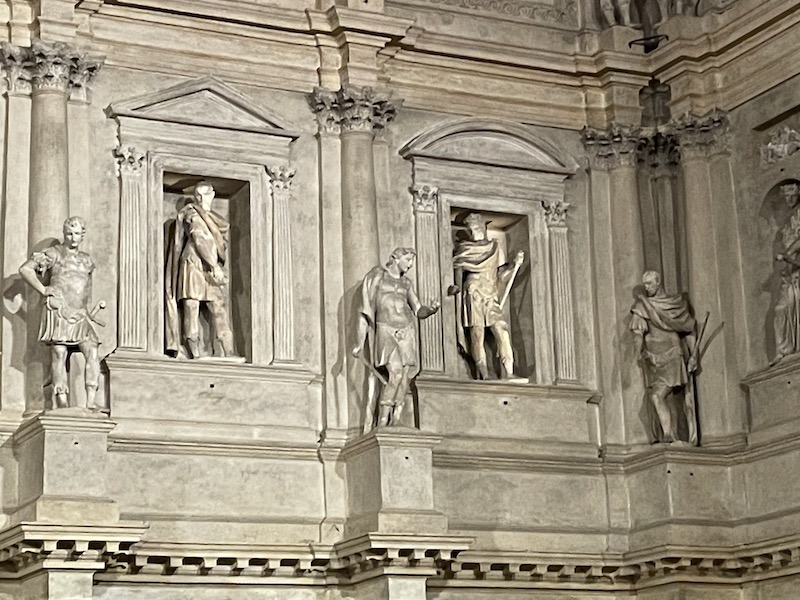
Here is a view going most of the way around ... the seats are actually made of wood (you can see the stacks of red seat cushions.
And a few final pictures from the curved back wall of the theater.
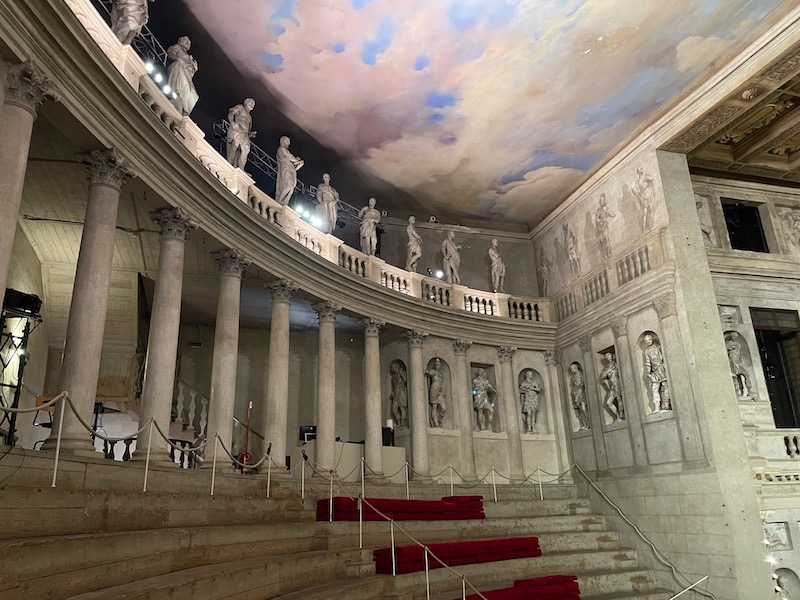
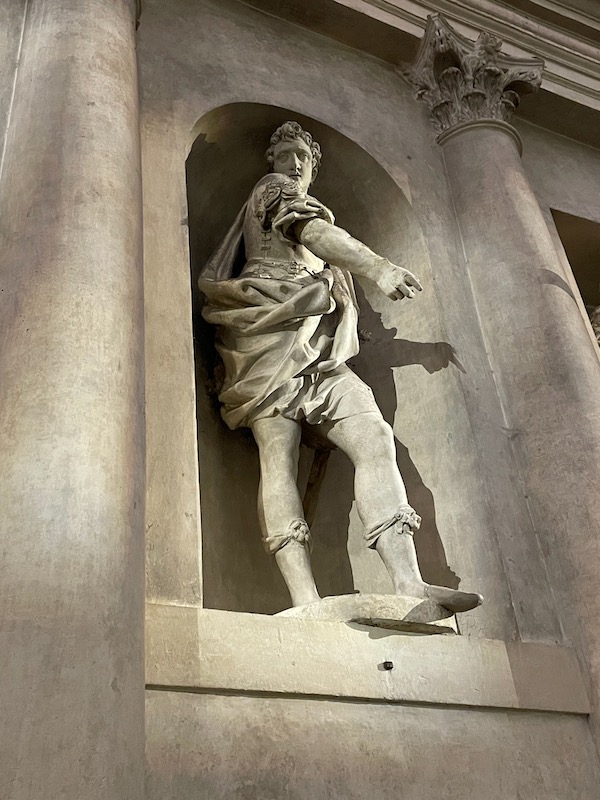
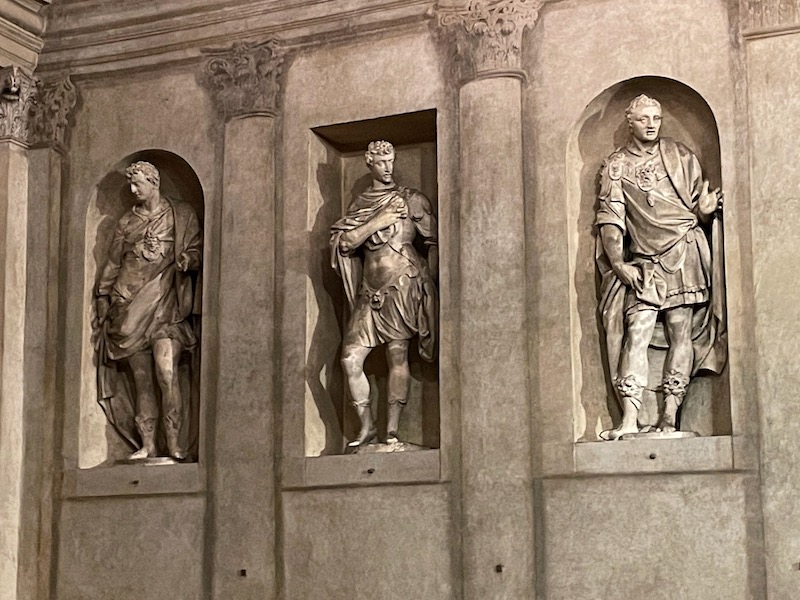

A little closer view of the street scene behind the wall ... very cool!

This is a very quick video ... make sure you have the volume on because it is JUST about the singing ... seems there were auditions going on... Not very long ... I didn't want to bother them.
And the model does a good job of showing the circular back part, the main wall, and then the streets behind.


The Chiesa di Santa Corona was built in the 13th century specifically to house one of the thorns of the crown of Christ that the bishop of Vicenza from 1259 to 1270, Bartolomeo da Breganze, had received as a gift from King Louis IX of France. Another not-so-lovely church exterior, but the interior is quite nice.
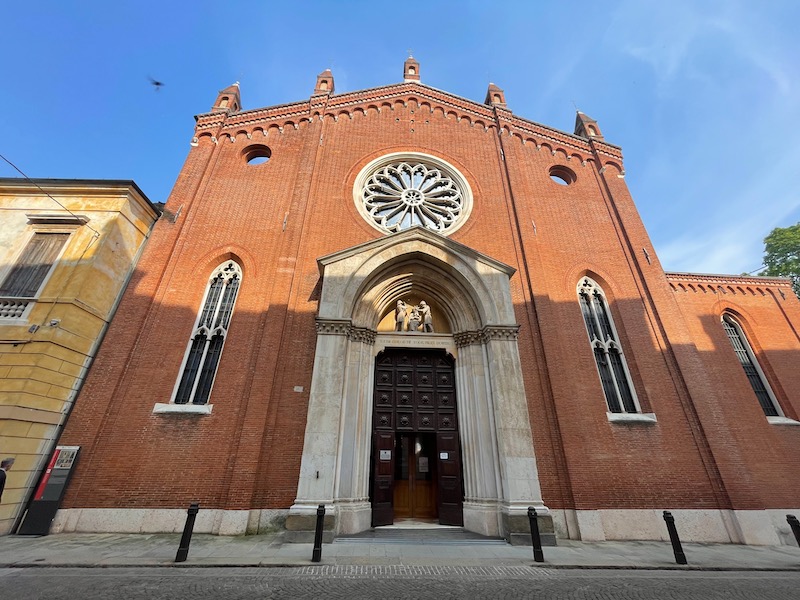
The interior plan is a Latin cross with the nave and side aisles, quite white and bright.

On the back side of the church is an interesting fresco from the early 16th century, depicting the Madonna della Misericordia protecting the faithful of the Confraternity of the Turchini.

There are several pieces of artwork that are specifically interesting here. The first is the Garzadori Altar, built in the 16th century. The painting in the middle, depicting The Baptism of Christ, dates from 1501 and was done by Giovanni Bellini. One interesting thing that was done here is that the paintings all have a 3D tactile reproduction, enabling people with visual impairments to explore and appreciate art through touch.
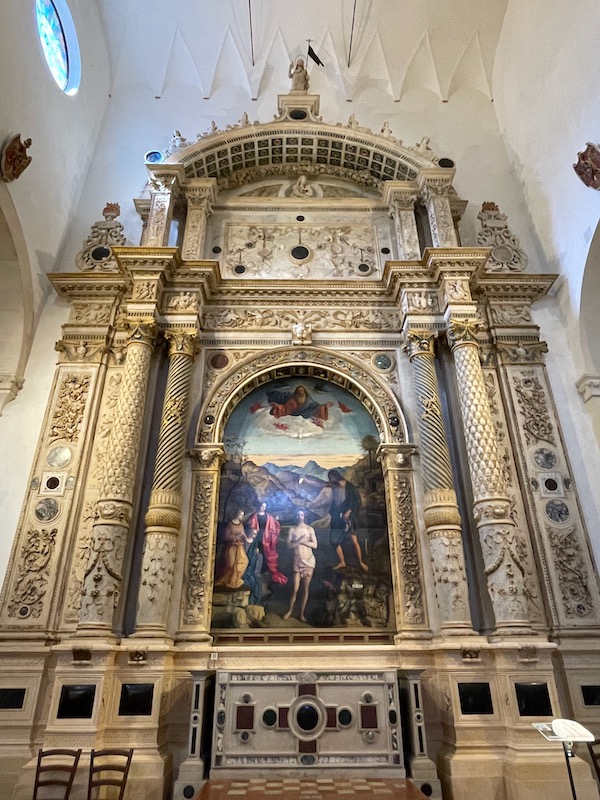


The most impressive part was the high altar, which dates back to 1667-1669. You have 2 lower portions, then a "temple" decorated with cherubs and composed of two orders of Corinthian columns in red marble. The lower 2 portions are embellished with polychrome inlays of precious marbles, lapis lazuli, corals, mother-of-pearl and other precious stones. In the frames there are little animals, flowers, little angels, objects related to the Passion, but also houses, farmhouses, and churches.
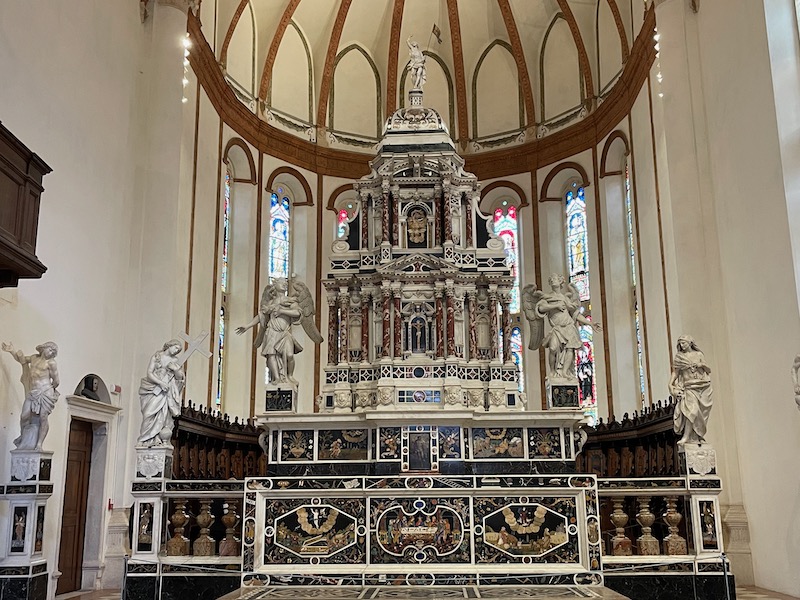
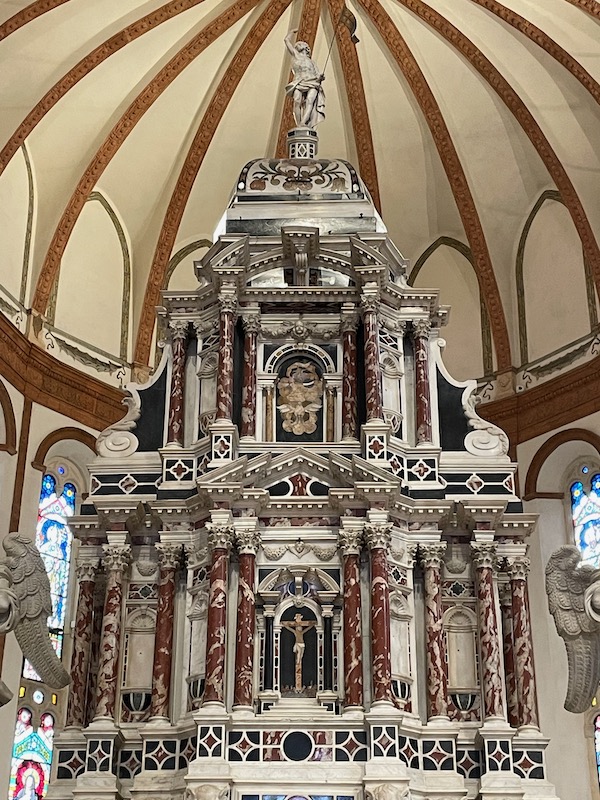

The front part shows the Resurrection, the Last Supper, the Apparition of the Madonna to Saint Vincent (with a view of Vicenza in the background).



I mentioned earlier that the King of France gave the Bishop of Vicenza a thorn from the crown of Christ ... here is how that scene is shown on the altar.
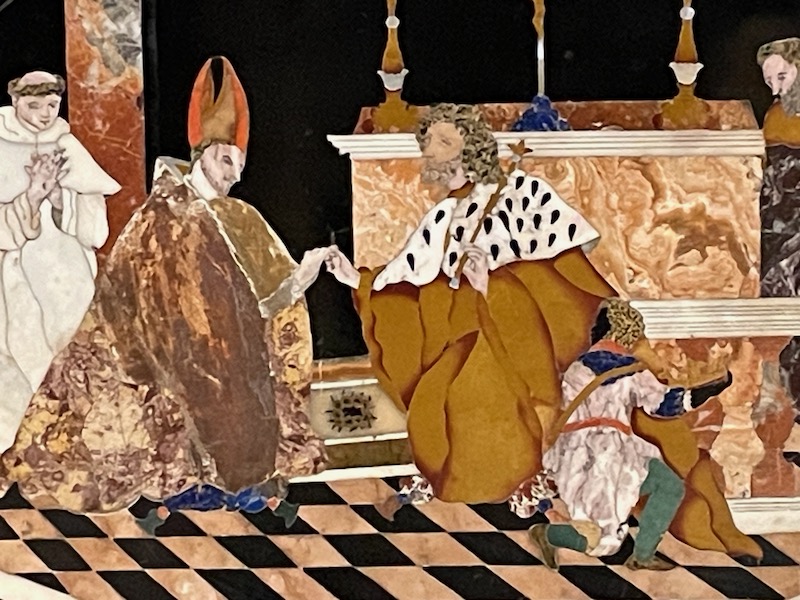
And here are a couple that I was able to get really close to, to show the details.

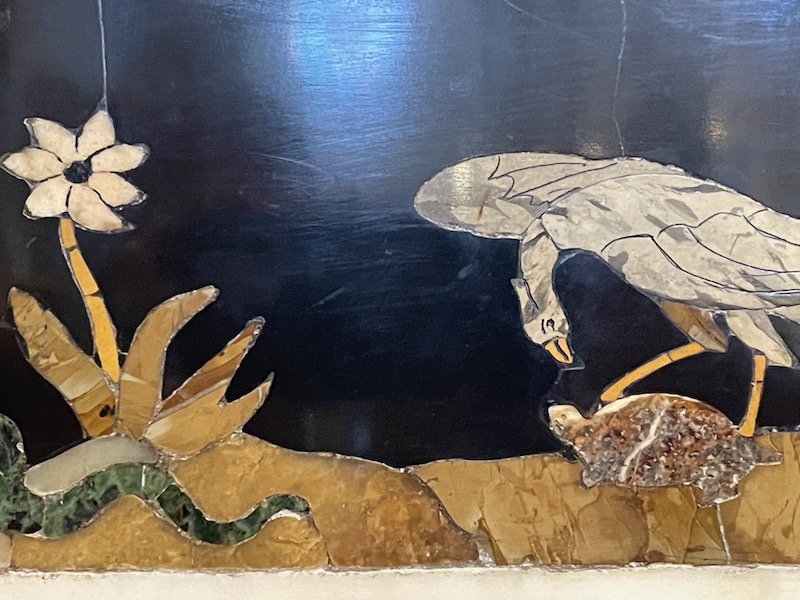
Along the perimeter of the apse are the choir stalls, built in the 15th century with wooden inlays of buildings and still life scenes.

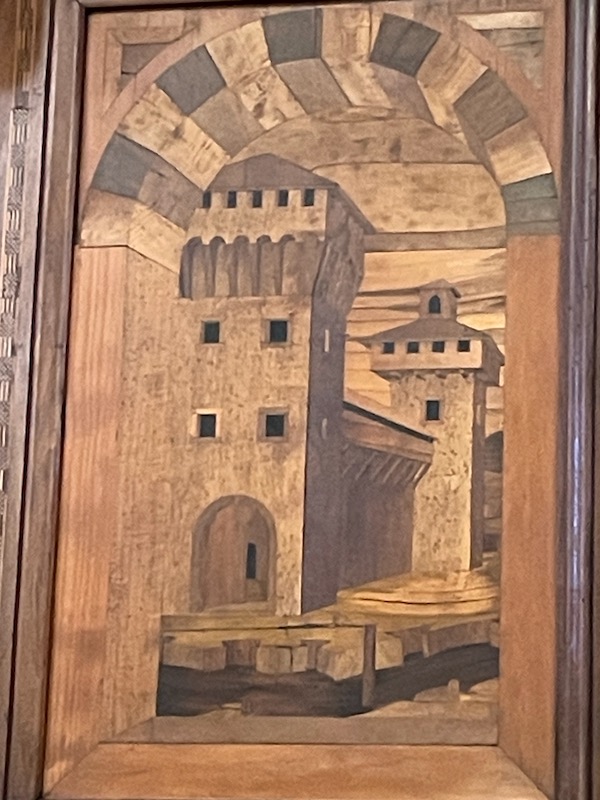
Most of the chapels were not that interesting, but the Chapel of the Virgin of the Rosary is quite different. The chapel was done in 1619 following a victory at the Battle of Lepanto. In the arch behind the altar are 15 octagonal paintings of the "Mysteries of the Rosary"
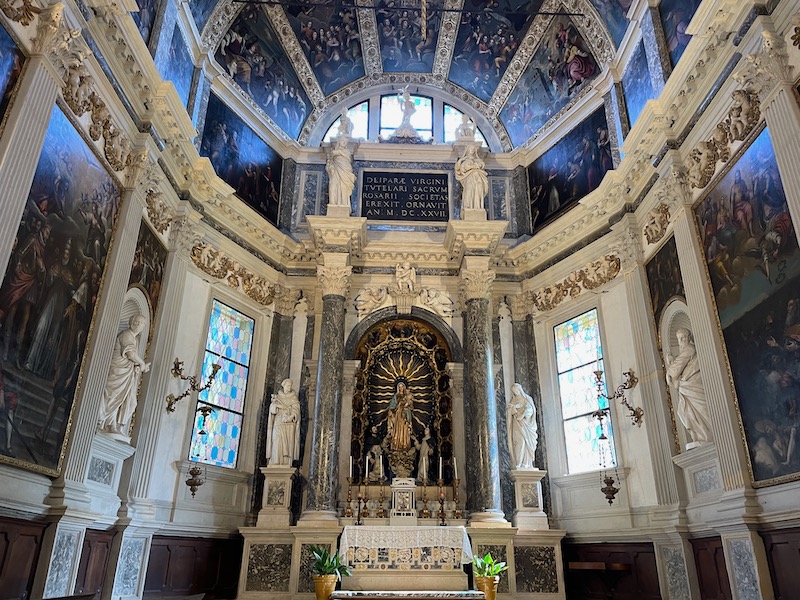

Around town are several palazzo's (palaces) that have the same Gothic architectural style ... they tend to all have a set of 3-or-4 Gothic lancet windows with a balcony, and then 1 or 2 other single Gothic lancet windows, also with tiny balconies. As we walked through town, we kept seeing the same style on many of the palaces around town.

Piazza dei Signori has always been the main square of the city. It was the location of the Roman forum and then the location of the law courts in the Middle Ages and the Renaissance. There are quite a few important buildings surrounding the square, and two columns at one end: one with the Lion of San Marco and the other with the statue of the Redeemer. It also has the famous Bissara Tower, which is the tallest building in the city. The tower dates back to 1174 and one of the various modifications was the addition of sculptures of a coat of arms and a group of the crowned Madonna, enthroned with the child and two saints.


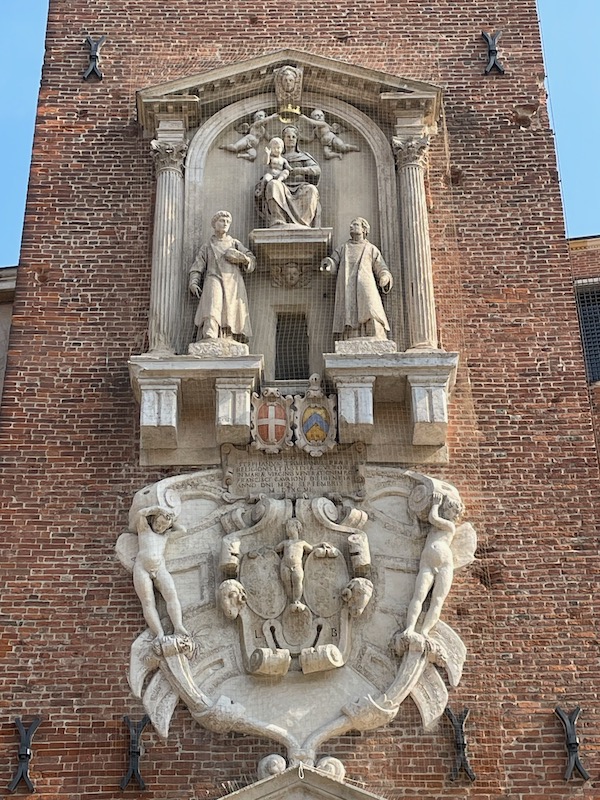
This building was a bit odd ... it is called the Palazzo del Monte di Pietà. In the middle is the former 14th century church of San Vincenzo with the Church of San Vincenzo with its Baroque façade. On either side are wings that were added in the 15th and 17th centuries. You can see traces of frescoes of biblical scenes around the top.
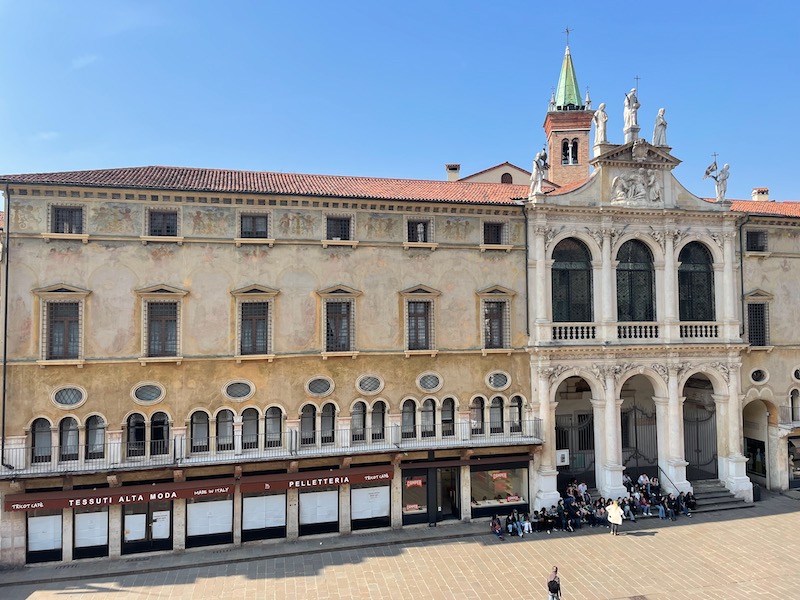

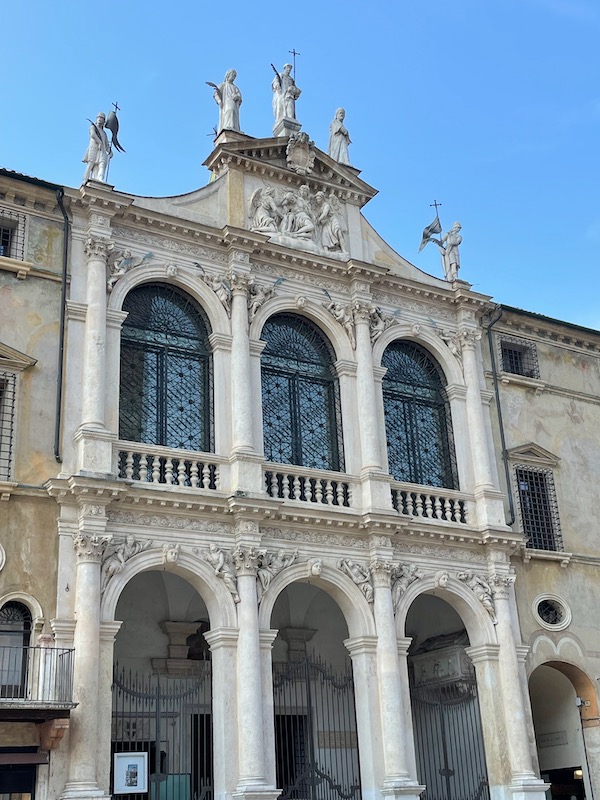

The Palazzo della Ragione (known as the Basilica Palladiana) was where justice was administered. The original building, built in the middle of the 15th century, had a huge hall on the upper floor that housed the Council, inspired by the Palazzo della Ragione in Padua (that we saw earlier with the mosaics on the walls). Palladio was brought in to surround the existing building with the loggias on both floors. Unfortunately for us, the hall itself was not open so we just walked around the upper floor of the loggia.


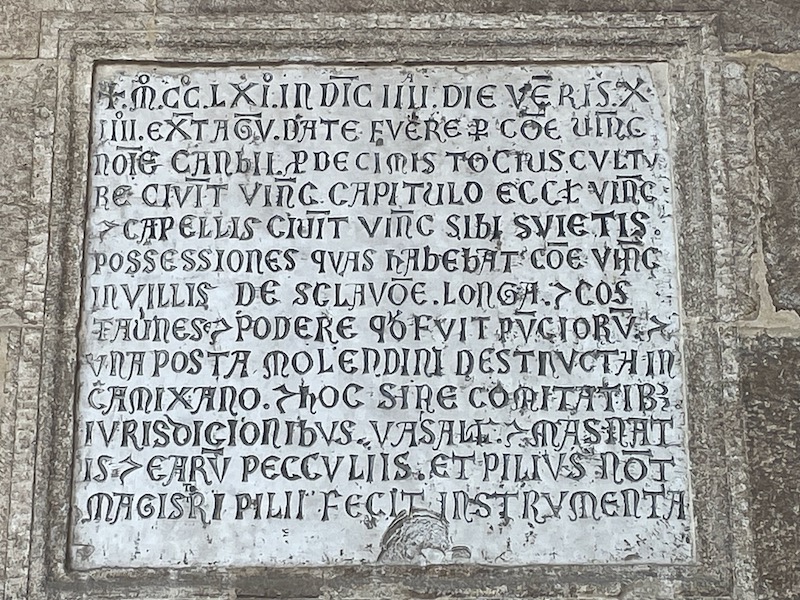
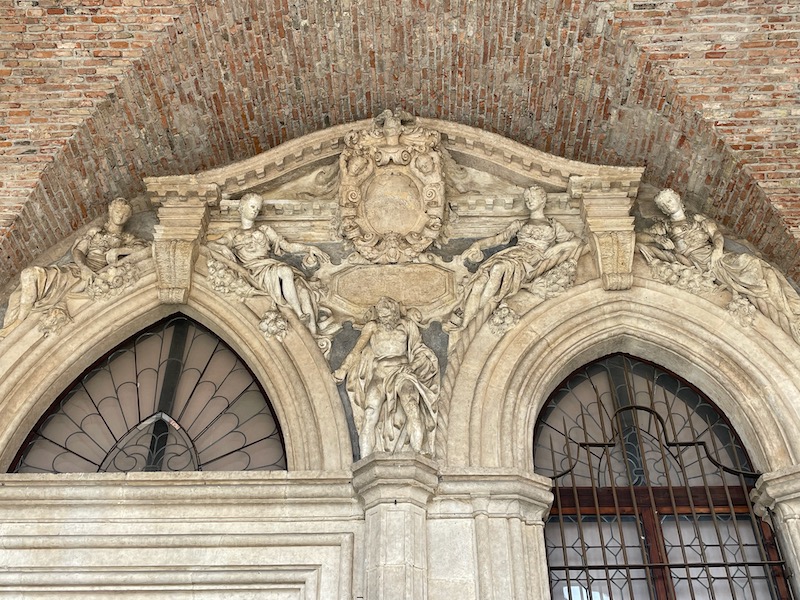
The Loggia del Capitanio, another palace built by Andrea Palladio, was the seat of the representative of the Republic of Venice. It was started in 1565 but remained unfinished when he stopped work on it in 1572 with only 3 of the 5 or 6 planned bays completed.

Last stop was the Cathedral of Santa Maria Annunciata. The first church here was built around the 4th century although there are archeological remains of a Roman building here from the 1st century. Construction on this church started in the 8th century although the current appearance only goes back to mid 15th century and the Gothic façade added in the 16th century (I don't find it a very nice looking church, personally). The dome was destroyed during WWII, as well as some frescoes being totally lost.
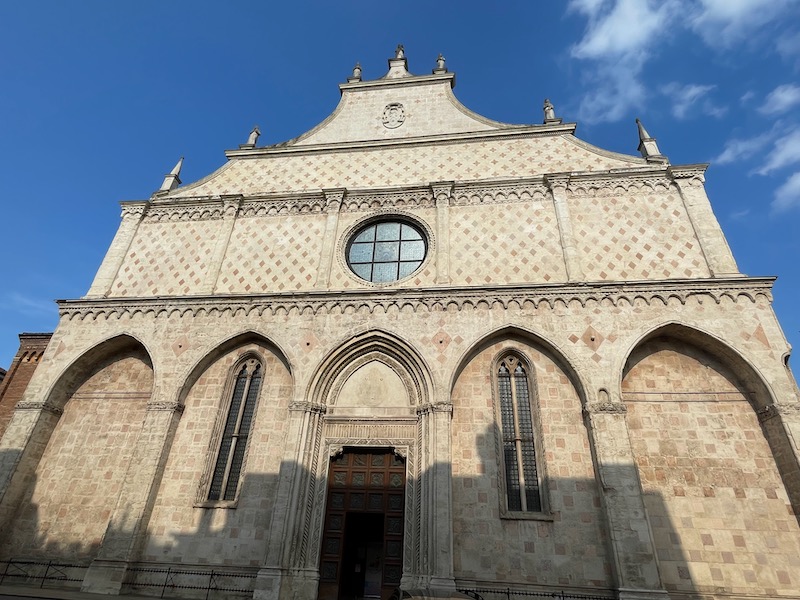

The interior is a single-nave with side chapels in a Gothic style. You can see the nice painted Gothic vaults
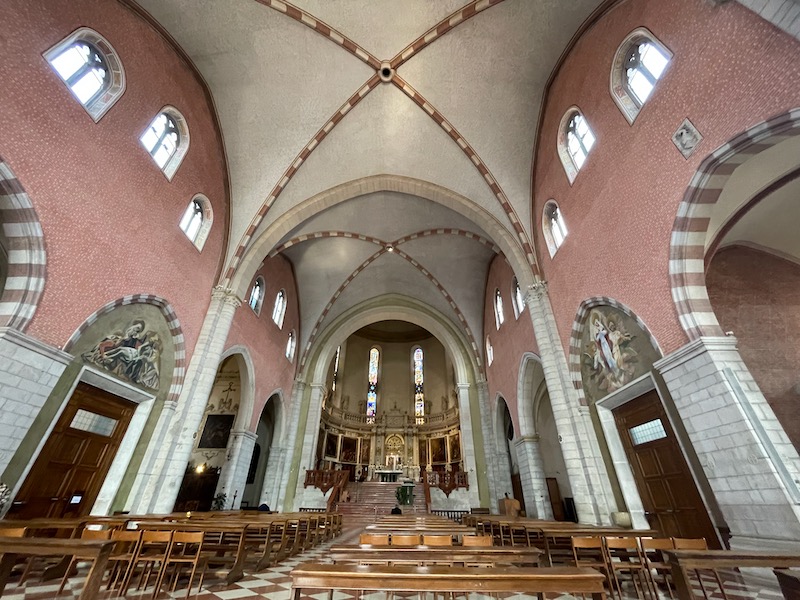
There are a couple modern paintings in the arches over the transept.


The Presbytery is raised quite a bit from the floor of the nave, which is similar to abbeys of Gothic Cistercian architecture. The pictures on the left of the altar depict scenes of the Old Testament while those on the right depict Constantine and the True Cross. What I find odd about many of the churches in Italy (or at least on this trip into Italy) is the lack of stained-glass windows. There are a few in this church, but not many.
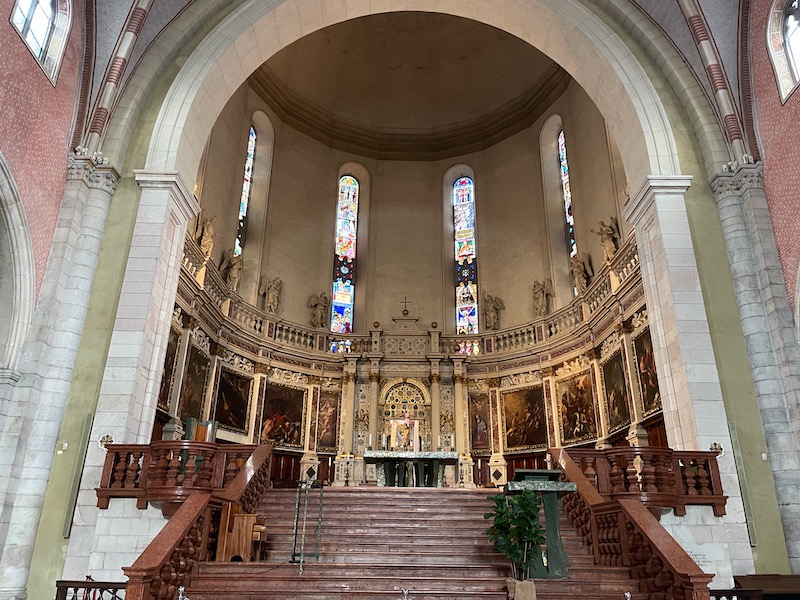

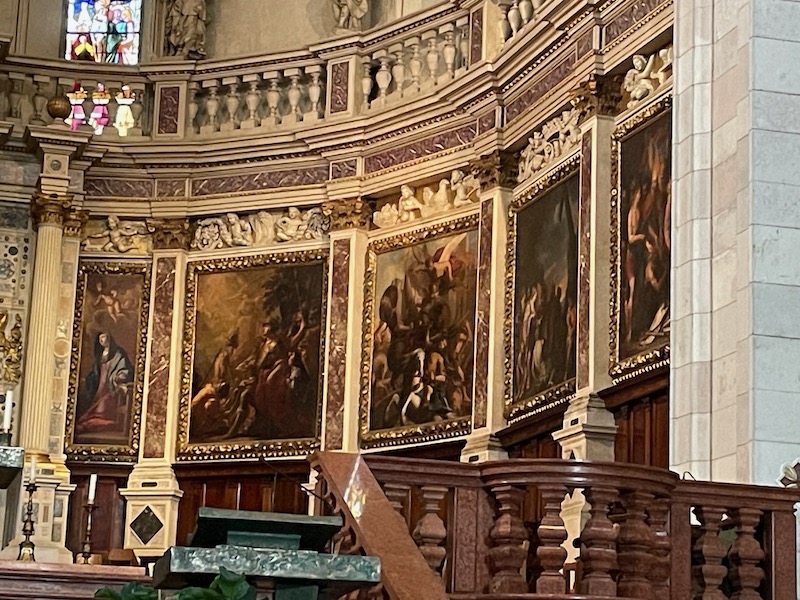

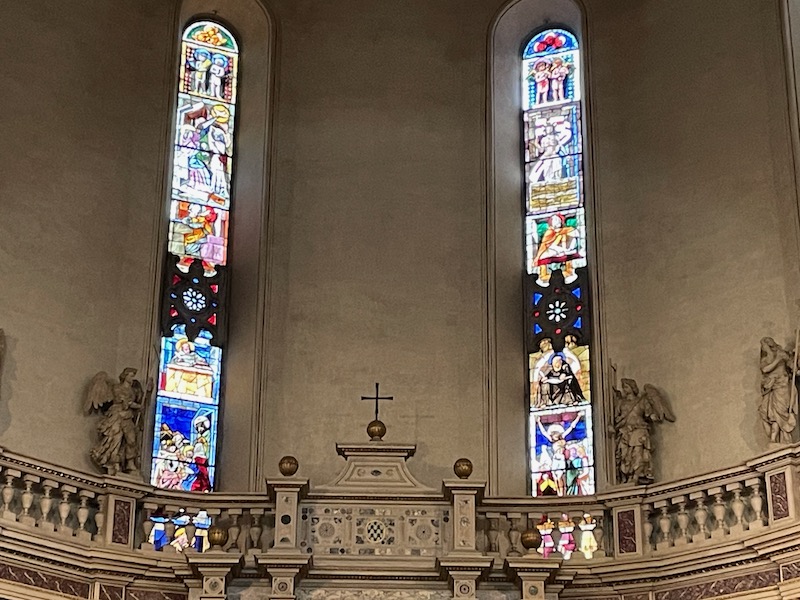
I thought this altarpiece was unique ... it is in the Chapel of the Incoronata and dates to 1426 by a religious brotherhood but then transformed around 1591 by the brotherhood of the Gonfalone. The altarpiece is entitled the Coronation of the Virgin (from 1448), a polychrome relief in stone by Antonino di Niccolò da Venezia.
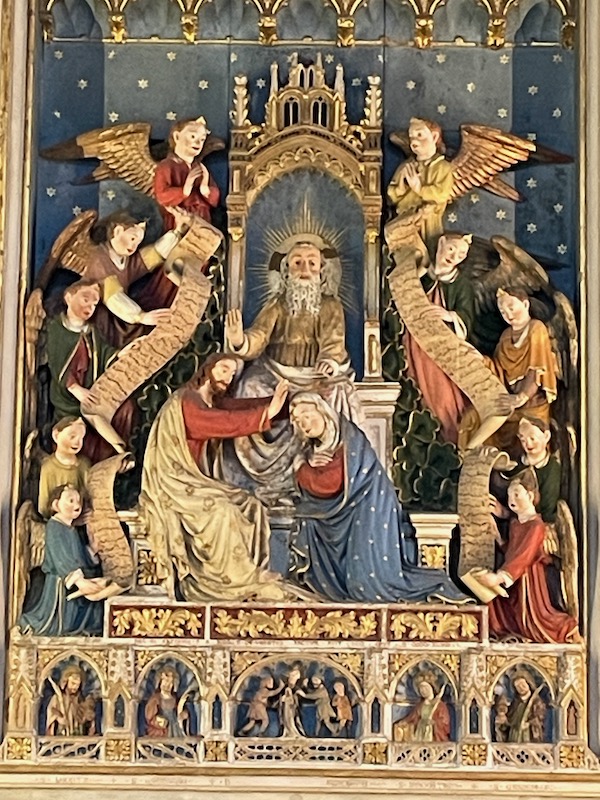
This is one of the best puppy-parks that we have EVER seen! There are puppy-parks in Toulouse, which are fenced-in and you can let your dog off the leash, but normally they are muddy, dirty, and without any grass. So this one was fantastic! It was absolutely HUGE and we could throw the ball and let her run in the grass.